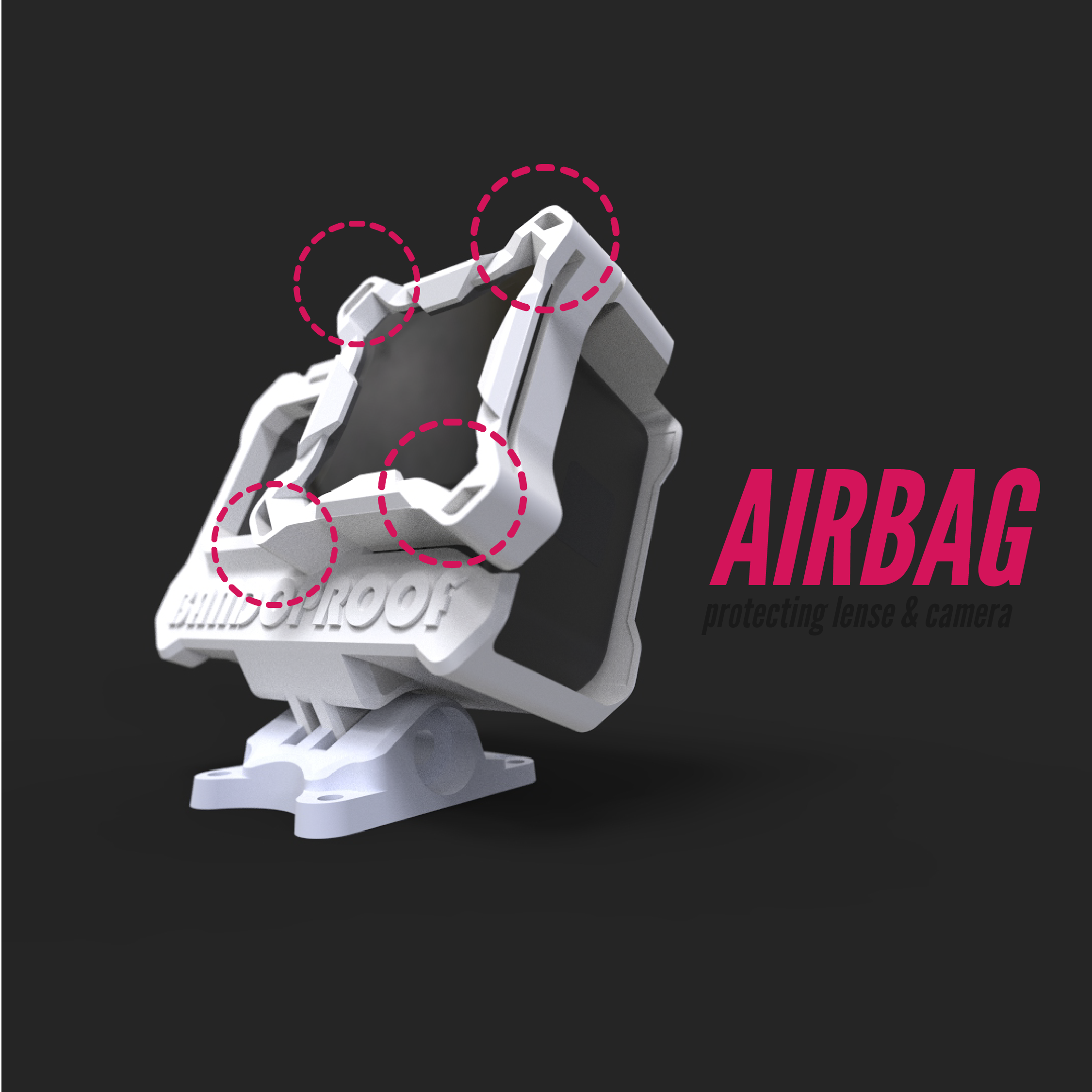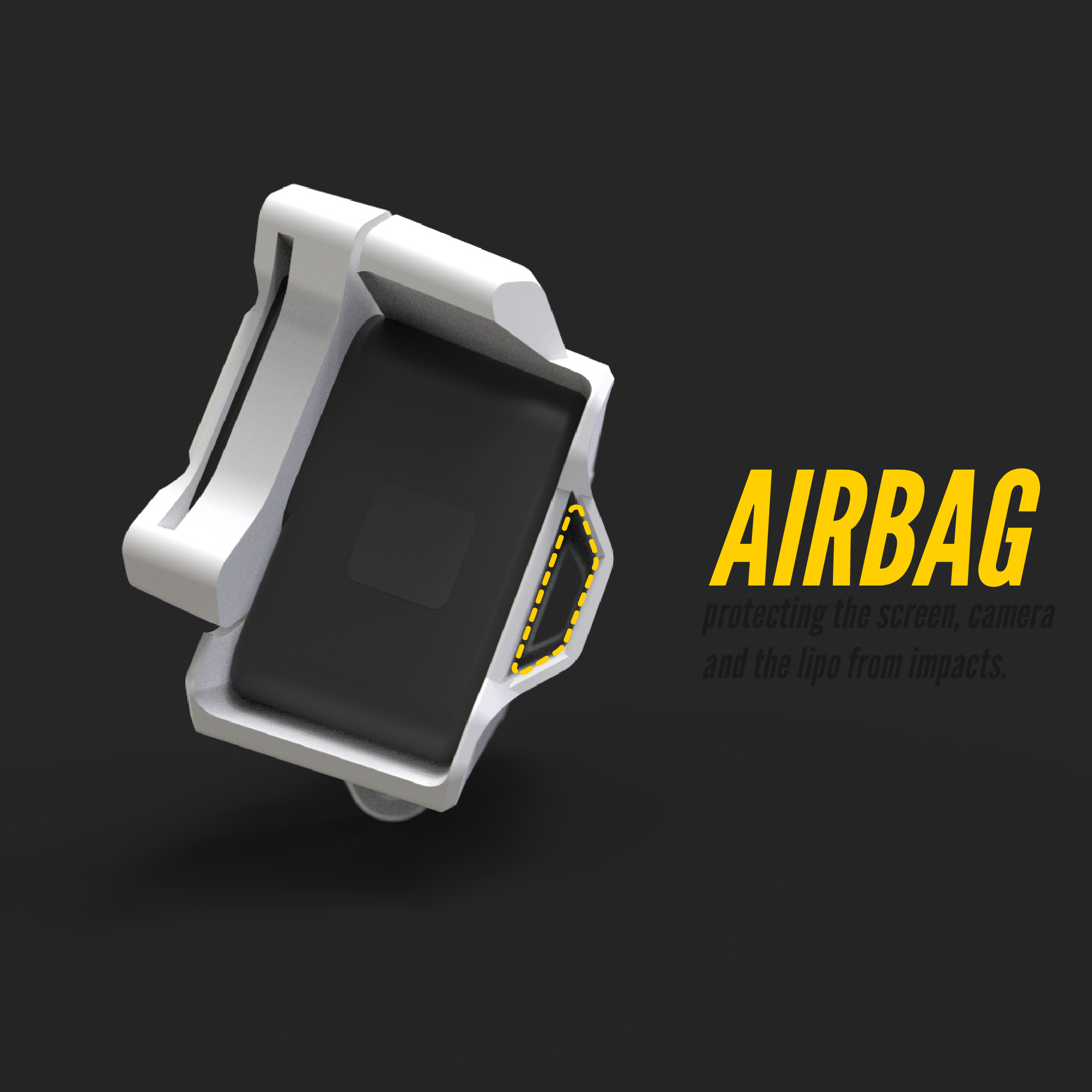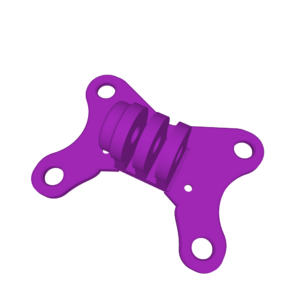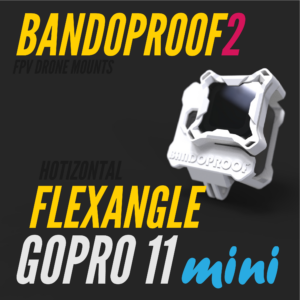Introducing the BandoProof 2 Flex Angle Horizontal Cam Mount for GoPro 9-12
At THE FPV PROJECT, we’re excited to present the BandoProof 2 Flex Angle Horizontal Cam Mount, designed specifically for GoPro 9-12 users who demand durability, flexibility, and optimal camera angles. In this comprehensive guide, we’ll delve into the features, benefits, and unparalleled advantages of this innovative camera mount.
Unmatched Durability
The BandoProof 2 Flex Angle Horizontal Cam Mount is engineered with high-grade materials, ensuring exceptional durability even in the most demanding environments. Its robust construction guarantees longevity, providing users with a reliable solution for capturing breathtaking footage in various settings.
Flexible Angle Adjustment
One of the standout features of the BandoProof 2 Flex Angle Horizontal Cam Mount is its flexibility in angle adjustment. With multiple pivot points and a wide range of motion, users can effortlessly position their GoPro camera at the perfect angle for capturing stunning shots from unique perspectives. Whether you’re filming action sports, outdoor adventures, or everyday moments, this mount offers unparalleled versatility.
Seamless Compatibility
Designed specifically for GoPro 9-12 models, the BandoProof 2 Flex Angle Horizontal Cam Mount ensures seamless compatibility and a perfect fit. Its precision engineering ensures that your camera remains securely attached during intense activities, providing peace of mind while you focus on capturing unforgettable moments.
Easy Installation
We understand the importance of convenience, which is why the BandoProof 2 Flex Angle Horizontal Cam Mount is designed for easy installation. With simple and intuitive setup instructions, users can quickly attach their GoPro camera and start filming without any hassle. Whether you’re a seasoned videographer or a novice enthusiast, you’ll appreciate the hassle-free installation process.
Versatile Applications
Whether you’re into extreme sports, travel videography, or vlogging, the BandoProof 2 Flex Angle Horizontal Cam Mount is a versatile accessory that caters to a wide range of applications. From capturing adrenaline-pumping action shots to documenting scenic landscapes, this mount empowers users to unleash their creativity and capture moments like never before.
Bandoproof 2 FPV drone mount
GoPro full size 9/10/11/12 🚀
Please read this description and the printer info below carefully. If you have any questions please contact me on my Instagram *@yannik.fpv** or send me an email: Yannik.fpv@gmail.com*
❗️ Even if the mount is called “Bandoproof” and is designed as thoughtfully as possible, it does not protect the cam from every external influence. Too hard crashes and tolerances on the part of GoPro can still lead to a defective cam – nevertheless I think we have the best FPV drone mount.
Compatibility: The mount is designed for all GoPros 9,10,11 & 12.
The FlexAngle mount is compatible with all “Universal” or “GoPro adapters”. But it works best with my Bandoproof frame adapters – just have a look here.
💥 Additional Screen-Protector: I have designed a screen protector for this mount that additionally protects the front screen. This can simply be clicked into the mount. Just have a look here. You will find all the information there.
😎 ND-Filter:
I recommend the use of TBS-ND filters with this mount. The mount is also compatible with the CameraButter BlackDiamond filters. If Screw-On ND filters are used (which replace the actual lens cover), they must not be larger (32mm x 32mm). I highly recommend the use of slide-in ND filters as they provide additional protection for the cam and are significantly cheaper to purchase and replace.
⚙️ Supported exposure settings:
The mount can of course be flown with all camera settings. Under certain conditions, the mount can be seen in the corners:
4:3 + Wide + Hypersmooth:off -> slightly visible
16:9 + SuperWide + Hypersmooth:off -> slightly visible
->As long as you are using ANY ND the mount shouldn’t be in view at all.
8:7/7:8 -> visible but disappears after exporting to 16:9 & 4:3
With all other setting combinations the mount is not visible
I recommend recording/exporting with 16:9+wide / 4:3+linear
To conclude: Thank you from the bottom of my heart for all your support. I really put a lot of heart, soul & time into these projects. I’m always open to feedback and suggestions: Just write me a DM on Instragm. If you are as enthusiastic as I am: Post a story, post or reel and tag me. ❤️
3D Printing Service (TPU) Specifications and Features:
TPU (Thermoplastic polyurethane) is a soft flexible material, Common uses for a material like TPU include, medical supplies, seals, automotive components, and household appliances, this is down to the material having a very flexible and elastic-like use. TPU has a melting point of 225 degrees to 235 degrees however 230 degrees is normally a stable temperature to print with. Another great advantage of this material is that it does not produce nasty emissions. Below are some key points when printing with TPU.
- Extremely flexible
- Lightweight
- Durable
- Non-soluble
- Heated bed required
Alright, let’s dive into the world of PID loop frequencies!
So, imagine you’re playing a really immersive video game. 
Well, in the world of drones, we have a similar situation. The drone’s flight controller is constantly making adjustments to keep the drone flying smoothly. This happens through something called the PID loop, which stands for the Proportional, Integral, and Derivative loop.
The PID loop is like the brain of the drone. It takes information from the sensors, decides how the drone should respond, and then sends commands to the motors. This entire process happens repeatedly and at a very fast pace. The frequency at which this process repeats is known as the PID loop frequency. It’s like the frame rate in a video game – the higher the frame rate, the smoother the game looks.
Now, when we talk about 2K, 4K, and 8K PID loop frequencies, we’re talking about how many times per second this process happens. So, 2K means the PID loop runs 2000 times per second, 4K means it runs 4000 times per second, and 8K means it runs 8000 times per second. It’s like choosing between running, cycling, or driving – each one is faster than the last!
So, you might be thinking, “Well, obviously 8K is the best because it’s the fastest, right?” Not necessarily! Just like driving a car super fast isn’t always the best option (you could get a ticket or crash 
For one, it can make your flight controller work harder, which can lead to overheating. It can also make your ESC protocol more prone to errors, kind of like how a fast internet connection can sometimes be unstable.
So, it’s all about finding the right balance. Just like how you wouldn’t use a race car to go to the grocery store, you wouldn’t necessarily use an 8K PID loop frequency for a casual drone flight. It all depends on what you’re using your drone for.
I hope this helps to understand what PID loop frequencies are all about! If you have any more questions, feel free to ask. Happy droning!
Read More About Lipo Batteries by clicking the link below:
https://oscarliang.com/fpv-drone-guide/
Checkout our Frames Collection by clicking the link below:
https://thefpvproject.com/product-category/frames/
1S = 1 cell = 3.7V
2S = 2 cells = 7.4V
3S = 3 cells = 11.1V
4S = 4 cells = 14.8V
5S = 5 cells = 18.5V
6S = 6 cells = 22.2V
For example, we call a 14.8V battery a “4-cell” or “4S” battery.
LiPo battery is designed to operate within a safe voltage range, from 3V to 4.2V. Discharging below 3V could cause irreversible performance loss and even damage to the battery. Overcharging above 4.2V could be dangerous and eventually cause a fire.
However, it’s advisable to stop discharging when it reaches 3.5V for battery health reasons. For example for a 3S Lipo, the max voltage is 12.6V, and you should land when the voltage reaches 10.5V (at 3.5V per cell).
























Reviews
There are no reviews yet.